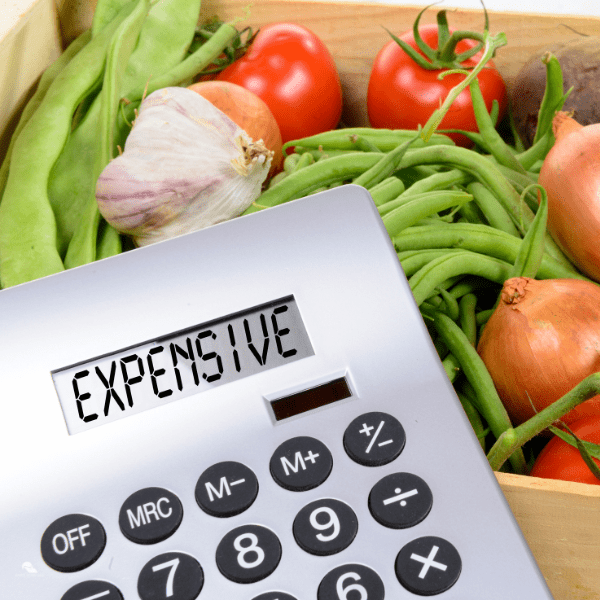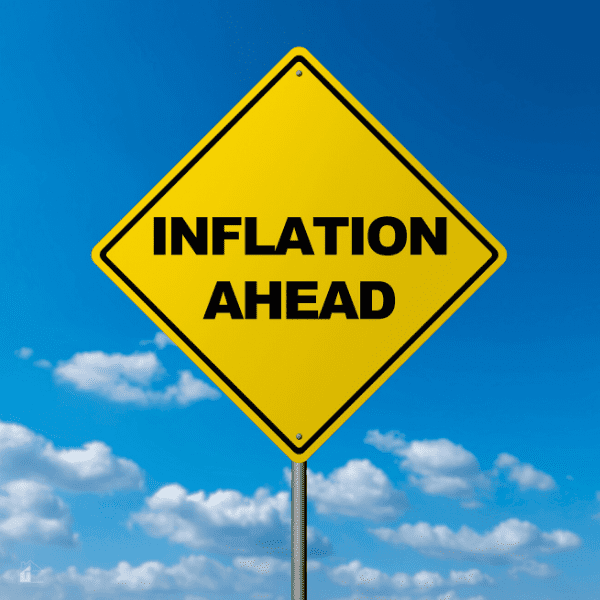How Much Are Groceries Going To Go Up?
This post may contain affiliate links which might earn us money. Please read my Disclosure and Privacy policies hereAre you worried about the rising cost of groceries? Are you trying to figure out how your budget will be affected? If so, this is for you! We’ll look at how much groceries are going up and what that means for your wallet.
Let's do this!

How much will food price increase in 2023
Food prices are expected to increase in 2023, according to the USDA. Vegetables will be the most expensive, with prices predicted to increase between 6 and 8%, while meat, bakery, and dairy will see increases of 3-4%.
Cereals and bakery products will experience the highest increases at 5-6%. Restaurant prices are expected to rise 6.5-7.5%, while the Canadian Food Price Report predicts a 7% increase. Companies and consumers should prepare for these inflationary prices and supply-chain snags.
Understand the Factors Influencing Grocery Prices
It's important to understand the factors influencing grocery prices to plan accordingly. Various factors, including the global supply and demand of food, the cost of labor and energy, the cost of transportation, and the cost of inputs such as fertilizers and pesticides, determine the cost of food.
In addition, inflation plays an important role in determining grocery prices. The Federal Reserve has said that prices have accelerated and are expected to keep rising. To stay on top of the changes, it is important to monitor grocery prices regularly, so you can adjust your budget accordingly.

Calculate the Increase in Grocery Prices from Last Year
It is important to calculate the increase in grocery prices from last year to understand how much more expensive groceries have become. According to the most recent Consumer Price Index report from the Bureau of Labor, food prices have risen 11.4% from August 2021 to August 2022.
Grocery prices have also significantly increased, jumping 13.5% in the last year and 0.7% in September alone, placing them ahead of the 8.2% annual inflation rate for all goods and services.
This means we likely feel the pinch of higher grocery bills, with menu prices increasing by 8.5%. It's clear that grocery prices are rising, and it's important to understand why this is happening and what can be done to mitigate it.
Look at Trends in Grocery Prices
Looking at food price trends for 2023 in the US could be a daunting task. However, it is important to stay informed of the latest industry trends to make the best decisions when it comes to grocery shopping.
Experts predict that food prices will increase between 2.5% and 3.5%, while vegetable prices are expected to rise between 6% and 8%. Meat, bakery and dairy prices could also rise in the coming year.
If you are looking for trends in food prices, various sources are available. The NBC News tracker provides data from real checkout prices paid nationwide at grocery stores, drugstores, and mass-market retailers.
The FAO Food Price Index (FFPI) measures the monthly change in international prices of a basket of food commodities. It consists of the average of five commodity group price indices, weighted with the average export shares of each of the groups for 2014-2016.
The U.S. Bureau of Labor Statistics provides data on the cost of food in the United States, and the World Bank's Global Food Price Index tracks global food prices. These sources can provide helpful information for understanding food trends and prices.

How grocery prices affect families
Grocery prices can hugely impact families, especially those living paycheck to paycheck. Rising grocery prices can leave people with less money for necessities like rent and healthcare. Inflation and rising input costs also contribute to the increasing cost of groceries, making it more difficult for low-income families to afford food.
It’s important to understand the factors that influence grocery prices so that you can adjust your budget accordingly. Additionally, researching possible solutions for lowering grocery prices and finding ways to reduce your grocery bill can help you better manage the cost of groceries for your family.
Research Possible Solutions
In the face of rising grocery prices, it's important to research possible solutions to help lower them. In the short term, families looking to lower their grocery bills should consider cooking from scratch and planning their shopping outings.
Tracking food expenses for one week and getting cash back on purchases can also help reduce spending. Making a shopping list and sticking to it is key, as well as buying non-perishable items in bulk when possible.
You should also shop at different stores and get creative with meal planning to get the best deals. Having the whole family involved in the meal planning process can be fun and help keep costs lower.
For families looking for long-term solutions for lowering grocery prices, several strategies can be employed. To begin, compare prices and stores to ensure you get the best prices. Additionally, avoid food shopping at convenience stores, as they are generally more expensive than supermarkets.
Furthermore, consider reducing the frequency of food expenses instead of the dollar amount. Removing convenience foods from your grocery list can be a great way to reduce your monthly budget. By focusing on purchasing local, unprocessed food and preparing meals at home, you can significantly cut back on costs.
Additionally, shopping from your pantry and avoiding shopping when you are hungry can help you save money. Researchers estimate that pre-prepared and convenience foods can cost up to four times more than those with a longer cooking time. Planning your meals and shopping wisely can dramatically improve your monthly budget while still having nutritious, delicious meals.
Another way to save money is to cook from scratch instead of relying on ready-made meals, as these can get expensive. Additionally, bring your bag to the grocery store – many stores will offer discounts.
Finally, consider swapping out meat for vegetarian meals some nights; legumes such as beans are high in protein and a cost-effective alternative. With these strategies in mind, families can save money on groceries and stay within their budget.
What can we do when grocery prices continue to rise
It can be difficult to handle the rising costs of groceries, especially when they seem to be going up faster than expected. Stocking up on items when they are on sale and planning meals around them can help reduce costs. Buying in bulk is another way to save money at the grocery store and look for store deals and coupons.
It is also important to look for generic brands of items with similar ingredients and quality as the name-brand options for a fraction of the cost. There are also food banks and other organizations that offer discounts or free food for those in need. Keeping track of your spending and creating a grocery budget can also help you save money in the long run.

How to update your grocery budget
When food prices start to rise, it is important to take the time to recalculate your grocery budget. According to the United States Department of Agriculture (USDA), consumers should spend an average of 10.3% of their disposable personal income on food. This can be further divided between food at home (5.2%) and food away from home (5.1%).
It is recommended that you update your food budget either monthly or weekly, depending on the fluctuation in food costs. Making sure to stay up to date with your grocery budget is a necessary step in making sure that you are not overspending.
We’ll all have to deal with the rising cost of groceries. But by understanding how much prices are rising and what that means for your budget, you can be prepared for its impact on your wallet. What do you think about these rising grocery costs? How has your budget been affected? Let us know in the comments below!






